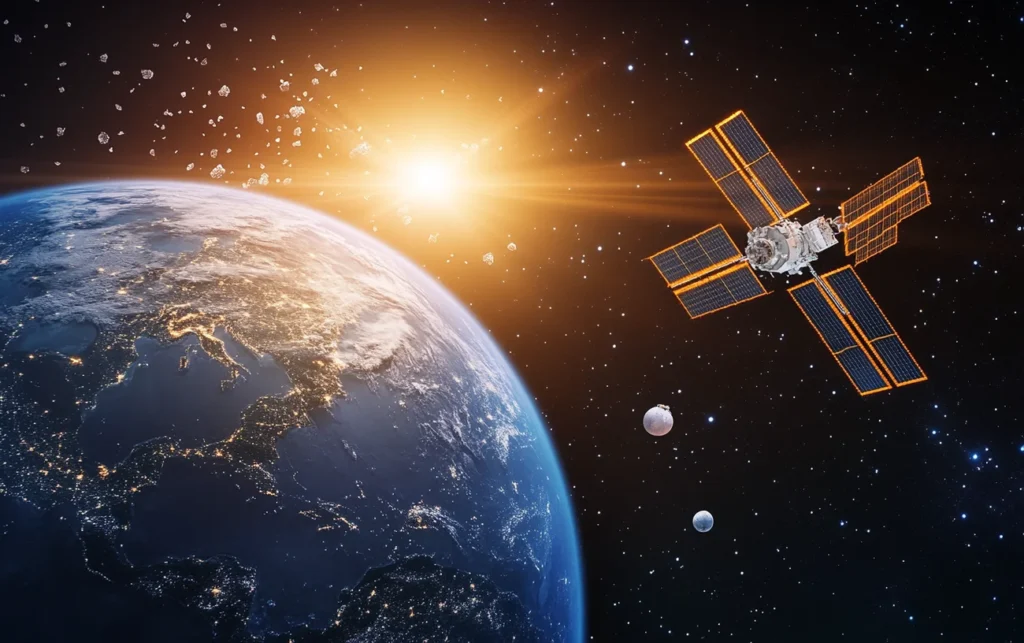Scientists warn of a serious danger tied to the Kessler Syndrome—a potential chain reaction of satellite and space debris collisions on Earth’s low orbit (LEO). If this scenario unfolds, it could cripple modern civilization, disrupting the internet, GPS, weather forecasts, and many other technologies we rely on daily.
What Is Kessler Syndrome?
Proposed in 1978 by NASA scientists Donald Kessler and Burton Cour-Palais, the Kessler Syndrome describes a scenario where the increasing density of space debris leads to a series of uncontrolled collisions. Each collision generates more debris, exponentially heightening the risk of catastrophic reactions.
Current Situation
As of 2024:
- Over 10,000 active satellites are in orbit, including approximately 6,800 from Elon Musk’s Starlink network.
- There are 40,500 pieces of space debris larger than 10 cm, according to the European Space Agency (ESA).
- Planned launches of an additional 40,000 Starlink satellites significantly increase orbital traffic density, raising collision risks.
Warnings from Experts
Dan Baker, Director of the Laboratory for Atmospheric and Space Physics at the University of Colorado, stated during the 2024 American Geophysical Union meeting:
“We must take this seriously and realize that, without action, we could render a significant portion of our space environment unusable.”
Plasma physicist David Malaspina added:
“If the Kessler Syndrome begins, the cascade of collisions with the smallest fragments will be the ‘canary in the coal mine.'”
Consequences of Kessler Syndrome
If a chain reaction of collisions becomes reality, the impacts could be devastating:
Loss of Satellites
Without satellites, essential services like internet, Wi-Fi, mobile networks, television, and GPS would be disrupted.
Weather Forecasting
Loss of meteorological satellites would make it impossible to accurately predict natural disasters, threatening agriculture, fisheries, and disaster response efforts.
Challenges to Space Launches
Debris accumulation would make new satellite launches nearly impossible due to the high risk of collisions.
How to Prevent Catastrophe?
Currently, approximately 1,000 daily collision warnings are recorded for objects in low Earth orbit, according to Thomas Berger, Director of the Space Weather Research Center at the University of Colorado.
Proposed Solutions
- Space Debris Recycling. Repurposing debris for new projects could reduce its accumulation in orbit.
- Atmospheric Burn-Off. Directing some debris to burn up in Earth’s atmosphere is another option. However, this approach risks damaging the ozone layer.
Experts emphasize the urgency of addressing the Kessler Syndrome threat. Political leaders and organizations with financial resources bear the responsibility to safeguard our shared future from this looming catastrophe. The time to act is now.

